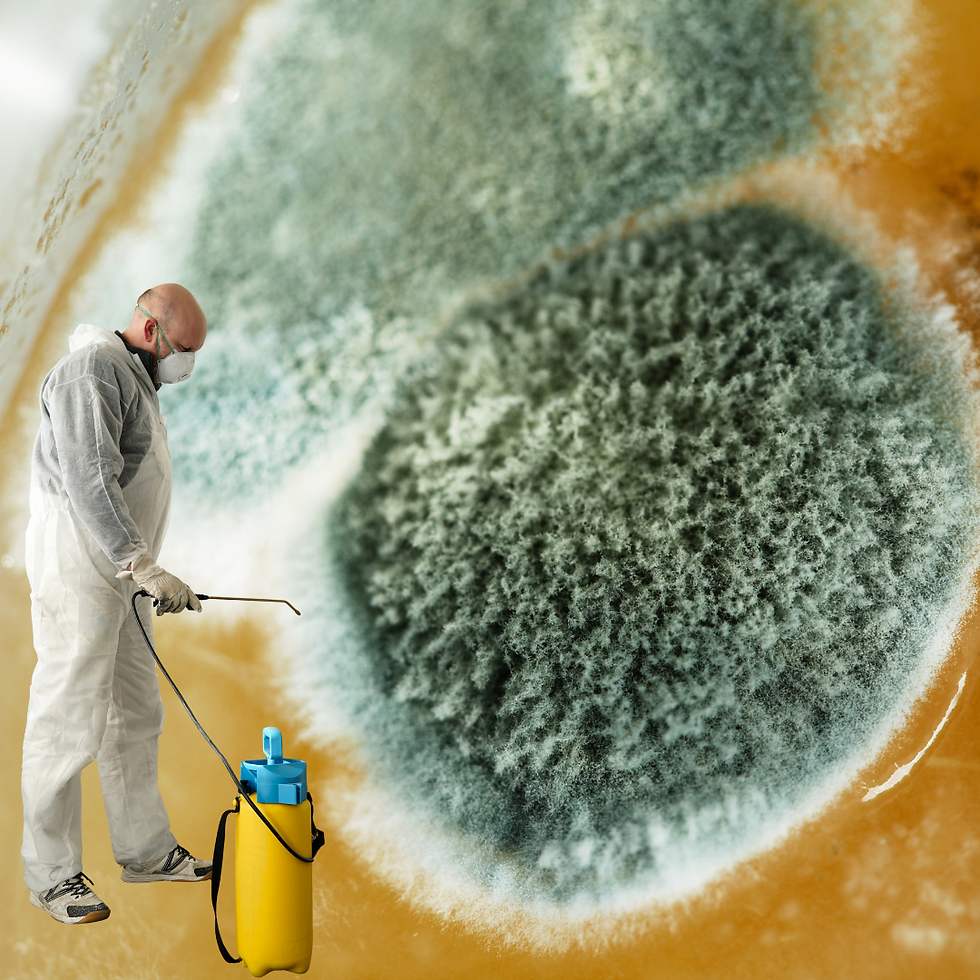Environmental Factors and Depression: The Hidden Triggers Around Us
- theymatter4

- Sep 4
- 3 min read

Disclaimer: The information provided in this article is intended solely for educational and informational purposes. It does not constitute medical advice, diagnosis, or treatment. Readers should not rely on this content as a substitute for professional medical guidance. Always seek the advice of a physician or other qualified healthcare professional with any questions regarding a medical condition or before making health-related decisions.
When most people think about depression, the first explanations that come to mind are genetics, trauma, or stress. While these are all important contributors, a growing body of research highlights that our environment—what we breathe, touch, and live in every day—can also play a significant role in shaping our mental health. Subtle exposures to toxins or irritants in our homes and communities may be quietly influencing mood, energy, and resilience.
Beyond the Brain: Depression as a Whole-Body Condition
Depression isn’t only “in the head.” It’s increasingly recognized as a condition influenced by the immune system, hormones, and environmental stressors. Many environmental toxins can trigger inflammation, hormonal disruption, and neurochemical changes, all of which are linked to depressive symptoms.
Toxic Mold and Indoor Air Quality
One of the most studied environmental risk factors for depression is toxic mold exposure. Mold produces mycotoxins that can impair neurological function, irritate the respiratory system, and alter the immune system. People living in mold-contaminated buildings often report not only fatigue and brain fog but also persistent sadness and anxiety. Research suggests that chronic exposure can dysregulate brain signaling, making individuals more vulnerable to depression.
Pesticides and Herbicides
Chemicals used to control pests and weeds don’t always stay in fields—they often drift into the air, contaminate food, and infiltrate groundwater. Studies link long-term exposure to pesticides and herbicides with higher rates of depression and even suicide among agricultural workers. These chemicals can interfere with the brain’s dopamine and serotonin systems, both of which are central to mood regulation.
Everyday Products: Laundry Detergents, Perfumes, and Cleaners
Many household products contain synthetic fragrances and volatile organic compounds (VOCs). These substances can disrupt the endocrine system and trigger chronic low-level inflammation. While reactions vary, some people are especially sensitive, experiencing mood swings, irritability, and even depressive symptoms after exposure.
Laundry detergents: Often contain strong surfactants and fragrances that linger on clothes and bedding, exposing the skin and lungs continuously.
Perfumes and air fresheners: Release VOCs that affect indoor air quality and may irritate the nervous system.
Household cleaners: Some release ammonia, chlorine, and formaldehyde derivatives, which can trigger oxidative stress in the body.
The Cumulative Effect
What’s important to remember is that these factors don’t usually act alone. A person may be mildly sensitive to a detergent fragrance, somewhat reactive to mold, and occasionally exposed to pesticides—but together, these small stressors can overwhelm the body’s defenses and contribute to mood disorders.
What You Can Do
Improve indoor air quality: Use HEPA filters, ventilate well, and address water leaks promptly.
Choose safer products: Opt for fragrance-free or naturally scented cleaning and personal care items.
Support detox pathways: Nutrition, hydration, and movement all help the body process and eliminate toxins.
Advocate for change: Support policies that reduce harmful chemicals in agriculture and consumer goods.
References
Arana, A., García, J., & Calvo, R. (2023). A systematic review of pesticide exposure and depression from 2011–2022. International Journal of Environmental Research and Public Health. https://pubmed.ncbi.nlm.nih.gov/37217130/
Beseler, C. L., & Stallones, L. (2008). Pesticide poisoning and depressive symptoms among farm residents. Annals of Epidemiology, 18(10), 768–774. https://pmc.ncbi.nlm.nih.gov/articles/PMC2599768/
Brewer, J. H., Thrasher, J. D., Straus, D. C., Madison, R. A., & Hooper, D. (2018). Mycotoxins, neuropsychiatric symptoms, and structural brain imaging in patients with chronic illness. Clinical Therapeutics, 40(6), 1003–1014. https://www.clinicaltherapeutics.com/article/S0149-2918%2818%2930229-7/pdf
Gore, A. C., et al. (2008). Endocrine-disrupting chemicals: From basic research to clinical practice. Reproductive Toxicology, 25(2), 136–138. https://www.sciencedirect.com/science/article/abs/pii/S0161813X08001095
Myung, S. K., Kim, D., & Lee, Y. (2024). Pesticide poisoning and depression: A systematic review and meta-analysis. Journal of Toxicology and Environmental Health, Part B, 27(1), 15–28. https://www.tandfonline.com/doi/full/10.1080/1059924X.2023.2278801
Shenassa, E. D., Daskalakis, C., Liebhaber, A., Braubach, M., & Brown, M. J. (2007).
Dampness and mold in the home and depression: An examination of mold-related illness and perceived control of one’s home environment. American Journal of Public Health, 97(10), 1893–1899. https://pmc.ncbi.nlm.nih.gov/articles/PMC2072855/
Zhang, Y., Li, X., Chen, Y., et al. (2025). Indoor mold exposure and its relationship with depression and anxiety among older adults in China. Environmental Health, 24(1). https://ehjournal.biomedcentral.com/articles/10.1186/s12940-025-01193-4
Other Information:
Wikipedia contributors. (n.d.). Chlorpyrifos. In Wikipedia. Retrieved September 4, 2025, from https://en.wikipedia.org/wiki/Chlorpyrifos






Comments